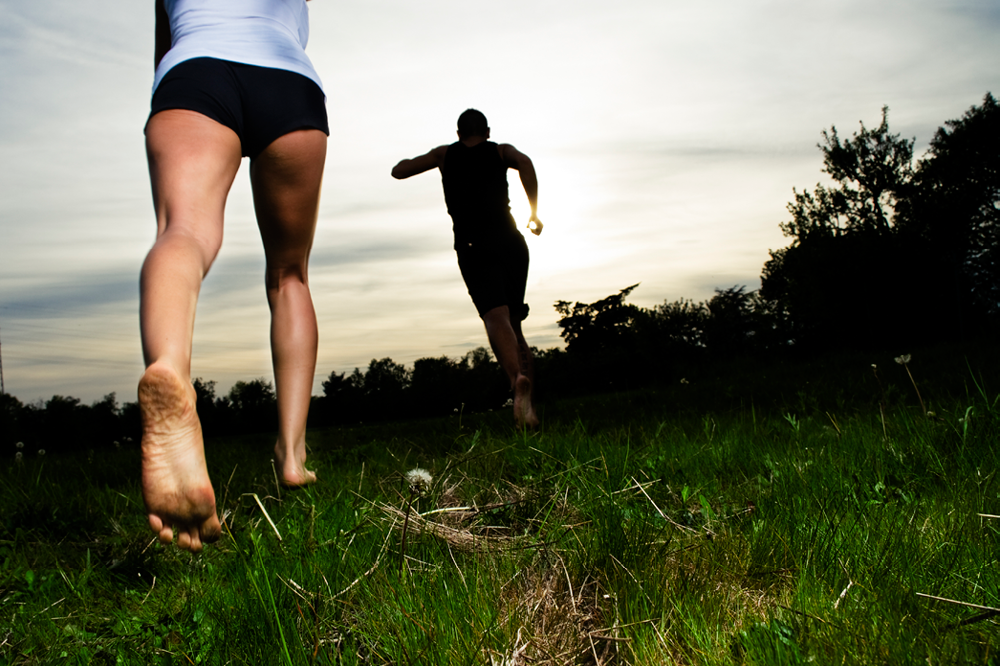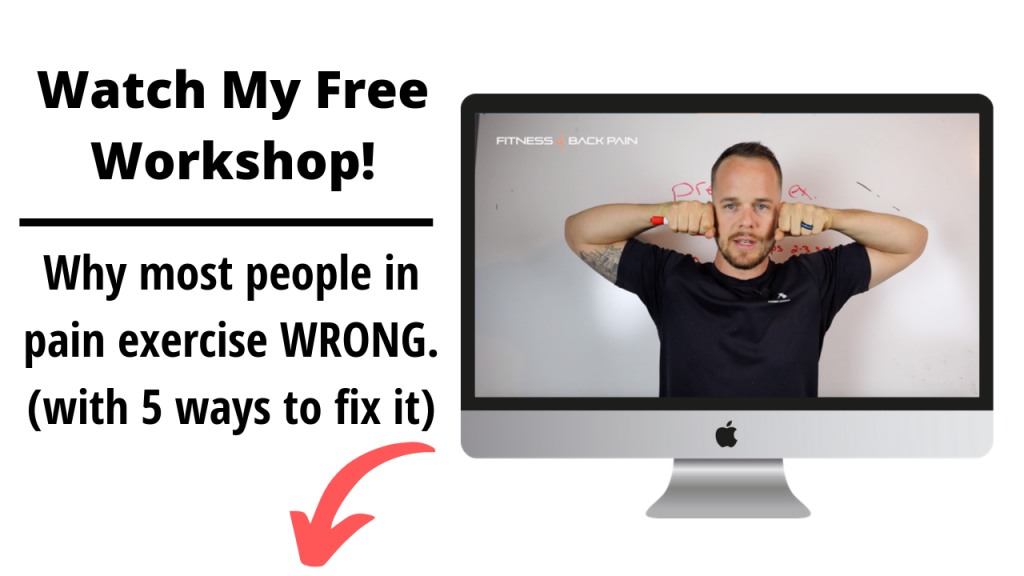
If you were to tell me 5 years ago that walking was a good exercise for lower back pain I would have looked at you like you were crazy. I used to think that walking was something you did when you got old and unable to really workout.
I was wrong.
Today I want to touch on one of my biggest secrets to smoothing out early morning back pain, getting my body primed for a workout and what I use to start my day off on the right foot.
The 7 am “Mall Strollers” that walk around the public mall every morning may be on to something… If they really want to see pain relief they are going to have to pick up the pace!
For the majority of people suffering from back pain simply walking can really bring relief to chronic or acute back pain. For some, walking could increase your discomfort but there have been studies published that explain the reasoning behind pain vs no pain when walking. The important thing is to listen to your body and harness the activities that don’t cause pain and stop doing the things that do. Pretty simple right?
These guys kinda have it together…a little more arm swing would do them good 😉
I really don’t want to overcomplicate this topic as some do but I want you to leave here confident that your newest lower back pain relief tool is as simple as walking. If you want 3 ways I personally use walking for back pain relief. Check this out here.
Why is fast-paced walking a great exercise for lower back pain?
For starters fast paced walking is one of my go-to warm ups before a workout. I share more on that with other warm up strategies here:
I want you to take note of my use of the words”fast-paced“. This is key when using walking as an exercise for lower back pain. The benefit of fast-paced walking compared to a slow stroll and the loads on your spine, is there isn’t one central or static load in a given area. When walking slowly the loads tend to hang around on the affected joints and could cause an increase in irritation with an already sensitive lower back.
When walking faster, the loads cycle through the different joints and muscles in the surrounding area faster. This is key to getting the entire body to work together. Less time putting unnecessary stress on tissues equals more room for tissues to heal and learn to work together.
This is why activities such as standing in one place and sitting for long periods of time begin to cause pain. It’s all because the loads are not getting spread out. They are constant in one area. The kicker here is when it comes to walking the speed and arm movement makes all the difference.
It’ true.
The difference in slow strolling vs fast-paced walking is the static loads and cycling loads I mentioned above. When you’re walking slow the loads tend to be over one area for an extended period of time. When the pace of your walking is picked up the arm movement that goes along with it allows the loads to cycle through the lower back area (Callaghan, Patla, and McGill,1999). If you think about it, it makes sense. Arm swinging while walking faster results in lower lumbar (back) spine torques, muscle activity and loading (McGill, 83). According to this, individuals who walk slower or do more strolling will experience less stability and more pain.
This supports the reasoning behind some people not experiencing pain relief when walking. According to this study, it could be that you’re walking too slow and not using the arms to help propel you properly. Often times you see people keeping their upper arm pinned to their side and only moving from the elbow down. In order to experience the low back pain relief from this exercise and to walk properly, you want to swing the arms at the shoulders while maintaining a faster walking pace.
“The important point behind these findings really comes down to using the body in the way it was intended to be used.”
Every limb on our body is designed to work in unison with the rest of the body. Everything balances each other out. Try walking with no arm swing. Doesn’t that feel weird? It’s almost like the rest of your body has to make up for what the arms aren’t doing or better yet, try walking while using an opposite arm swing pattern then what you are normally used to.
It’s crazy right?!
You definitely feel off balance and uncoordinated. This is why proper form in everything that you do from shoveling mulch to lifting weights needs to be as good as possible. Dealing with lower back pain isn’t about cutting things out but retraining the body to become more efficient and determine what causes the pain and what doesn’t. From their you asses the movements and design a program to strengthen the weak areas while staying within the pain-free zone.
Bonus findings of fast-paced walking being a great exercise for lower back pain relief.
Another point supported by science. There was another study published that found the faster the walking the higher the torso stiffness was (Kubo, 2006) In the realm of back pain you want a stiff torso. This provides stability to the spine and allows the body to keep each vertebra and disc in position. Faster walking has also proven to be a cofactor in preventing and a more successful recovery from low back pain (Nutter, 1988). Nutter and his team have proven that typical slow-paced mall strolling actually only makes the pain worse due to the static loading. In order to see the results from the walking, you need to pick up the pace and emphasize the arm movement from the shoulders, not just the elbows.
Simply stated, keep walking! Not only that but don’t be afraid to break a sweat. Pick up the pace and I promise you will notice a difference in the pain you experience!
What is the best way for me to incorporate walking as an exercise for lower back pain?
What is your threshold?
First, you need to test to see what your current walking threshold is now. Can you only walk 10 feet down the hallway? Can you walk down the driveway? What about down the street and back?
We are all at different points and have a different pain threshold. What I need you to do is stop thinking or worrying about where others are with their recovery and focus on you. Walk at your pace and challenge yourself based off of YOUR improvement. Comparison will kill your chances of healing as fast as you may want.
When choosing your distance you want to make sure you are stopping BEFORE you notice an increase in discomfort. Keep the pace brisk and be sure to challenge your distance according to how your body is reacting to the “walking workouts”.
Make these a priority
If you are at the point where a short distance is all you can do that’s fine. Keep it up and continue to challenge your body. If you can maintain a good pace and distance I want you to prioritize this walk. Try to either start your day off with it or if you are at a desk all day break up your day with short 5 minute walks around the building (inside or out, get creative) Especially after sitting for long periods of time. Your tissues have been stagnant and can start giving your negative feedback from the sitting. By getting in some walks you can re-fire these tissues for more support and a happier healthy lower back.
The key to walking is simply doing more of it. I know this sounds like something your doctor would tell you that nobody really takes seriously but take my word for it. It works and is a must if you are recovering from any kind of injury or operation.
Your tissues need to move and whether they get that movement is up to you!
I want to hear your thoughts!
What has been your experience with walking? Therapeutic or increase in pain?
Let me know in the comment section below!
Thanks for reading!
William
p.s. My goal for this site is to help 1 million back pain sufferers around the world. If you want to be apart of that goal please share this with any of the groups you’re apart of or any friends you may have! It’s a huge help! Thank you!



This was a great excellent informative post you have shared on this page about the pain of lower back during exercise and walking but If you are at the point where a short distance is all you can do that’s fine. Keep it up and continue to challenge your body. If you can maintain a good pace and distance I want you to prioritize this walk. Try to either start your day off with it or if you are at a desk all day break up your day with short 5 minute walks around the building (inside or out, get creative) Especially after sitting for long periods of time. Your tissues have been stagnant and can start giving your negative feedback from the sitting. By getting in some walks you can re-fire these tissues for more support and a happier healthy lower back.
Thanks.